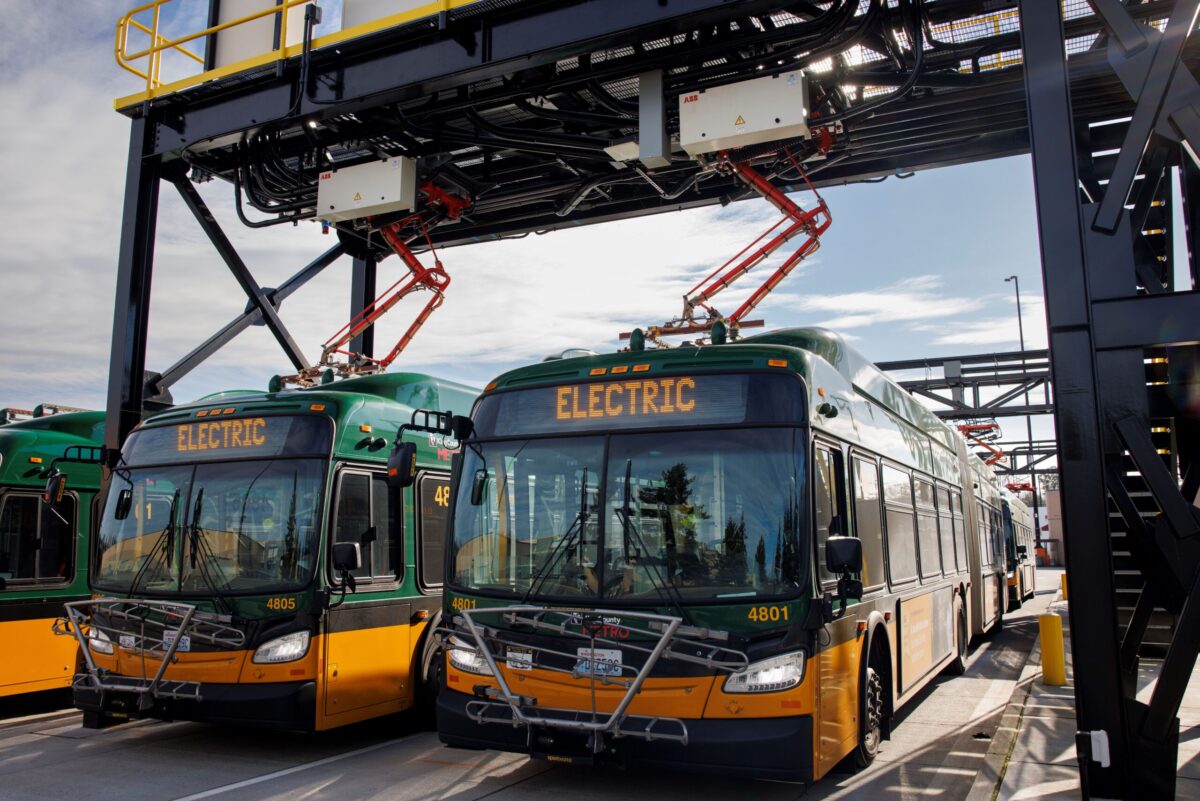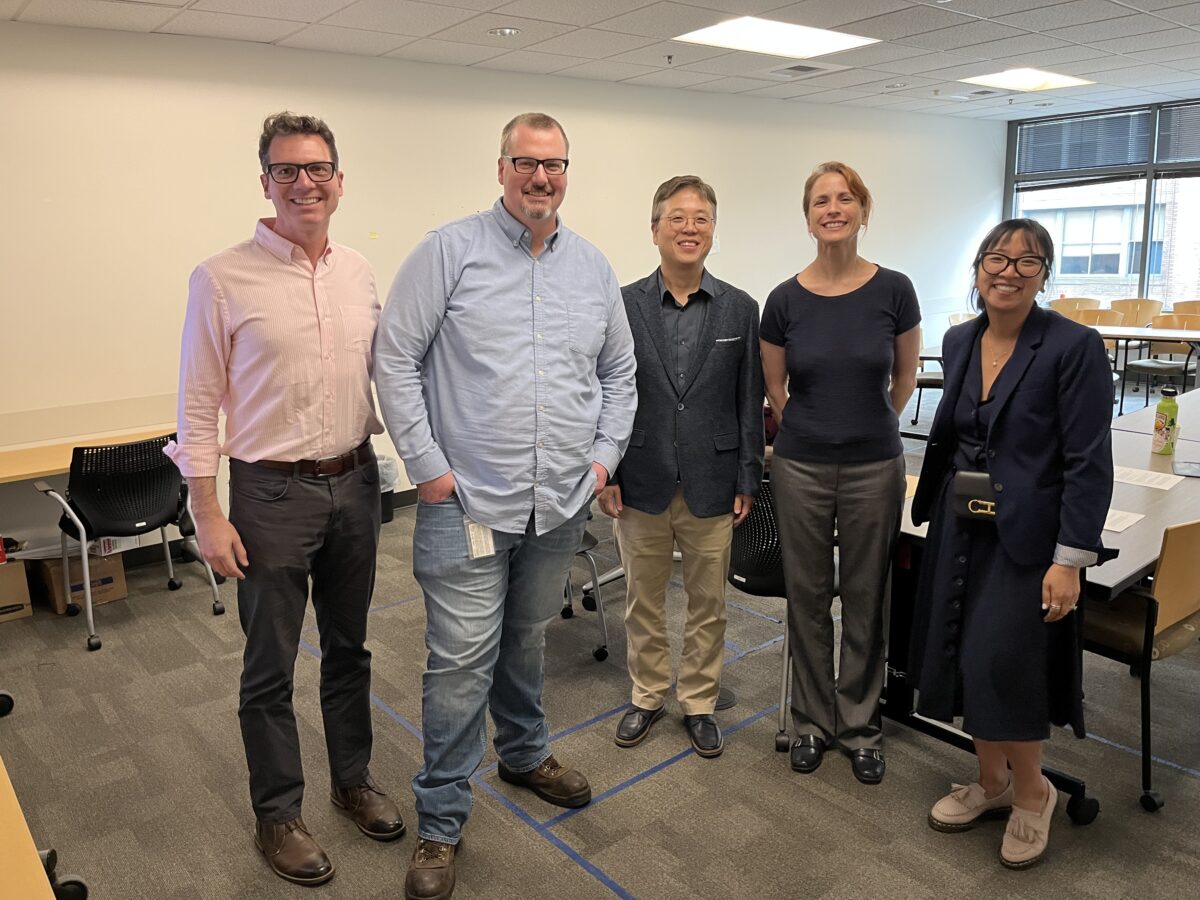Posted on February 21, 2024
Post categories: Construction Management News Research

King County Metro (Metro), which serves a daily average of over 250,000 riders across more than 203 square miles of the county, has an emissions challenge. Their zero-carbon emissions target, set by the King County Council, must be met by 2035. This will require electrifying their entire bus fleet, a costly venture. While Metro currently employs 51 battery-electric buses (BEBs) and a host of electric trolleys, there are approximately 901 buses in daily service.
“King County Metro has a rare opportunity where leaders who recognize that climate change is a real crisis are working with the community to drive change,” said Huoi Trieu, Metro’s Zero Emissions Director. “We’ve been in the clean, sustainable transit space for a long time, and there’s the political will, public support, and staff expertise to help us meet our goals.”
While Metro has a target date and strategic climate action plan, they needed more support for this enormous undertaking. First, with the deadline fast approaching, how could they speed up the process? Second, what funding mechanisms would be best for this billion-dollar investment? Third, could a private partner provide the technical expertise to ensure uninterrupted service during and after bus electrification?
To answer their questions, they turned to Hyun Woo “Chris” Lee, A PD Koon Endowed Associate Professor in CBE’s Department of Construction Management.
Lee, who’s been teaching at UW since 2016, specializes in building and infrastructure sustainability, and construction worker health and safety. He was intrigued by Metro’s need to completely overhaul their transportation infrastructure.
“When you’re looking at bus electrification, there are quite a few challenges that require innovative solutions,” said Lee. “King County was talking about a series of projects requiring a tremendous amount of electricity, measured not by kilowatts but by megawatts.”
Lee first learned about the Metro program through Bart Treece, director of the Mobility Innovation Center (MIC) at UW CoMotion. The center partners with civic organization Challenge Seattle, UW faculty, and regional agencies to solve transportation network issues. CoMotion supports UW researchers who want to bring their innovations from lab to market by offering expert advice, programs, and connections to transform their ideas into economic and societal impact.
“Partners come to the table with problems in need of solutions. We pair them with academic talent at UW to address their transportation challenges with near-term applied research,” said Treece. “There’s a lot of opportunity for academia to help develop equitable, sustainable transportation systems that work for everyone.”
Metro approached MIC with a host of questions about reducing emissions by converting to a zero-emissions fleet. What were the funding options and their legal ramifications? How had other municipalities successfully made the transition to electric transit? How should they develop requests for proposals (RFPs)?
“Knowing Lee’s background and expertise, he was the first person I thought of to tackle this project,” said Treece.

Municipalities face enormous challenges in their transitions away from fossil fuel. One of those is access to renewable energies and charging technologies. After all, Metro is a public transit authority, not an energy provider. They need knowledgeable partners in the renewable energy sector.
“We are investing in a system,” said Trieu. “We’re procuring battery-electric buses and installing the charging infrastructure. Then, there’s the charge management system software that dictates charging times. When you add in scheduling technologies to plan service, you get multiple systems that must integrated to ensure we’re effectively delivering service as we transition.”
Another challenge is cash flow. Most public agencies don’t have millions of dollars lying around for renewable energy projects. Lee would have to help King County understand potential options for development and delivery.
Metro was interested in forming a public-private partnership (P3) to solve some of their challenges. In a P3, a private entity collaborates with a public organization to provide the necessary skills and capital investment for large-scale projects. For Metro, a business partner from the private sector could offer the necessary financing and guarantee infrastructural resilience to provide the public with continual access to services.
“Most importantly, the private entity brings its own expertise in project design, construction, and infrastructure operation and maintenance so that the Metro can focus on what it’s good at: providing public transportation,” said Lee.
UW’s Mobility Innovation Center specializes in fostering collaborative partnerships between public agencies and the private sector to help the Pacific Northwest region develop its full potential. However, there was another hurdle to navigate before Metro chose a private-entity partner: Laws in some states govern the ability for a public agency to enter into a P3. Was it even legal for them to do so?
Lee’s report for Metro outlined everything a public entity would need to evaluate a BEB plan, including project regulation reviews from multiple states, a decision-making matrix for selecting P3 partners, RFP guidelines, and more. It was a massive undertaking that involved a substantial contribution by former UW Senior Research Scientist Laura Osburn. And, along the way, it transformed into a tool that other organizations could adopt for their own zero-emissions projects.
“King County Metro and our UW research team agreed that this report should be generalizable and help the industry overall,” explained Lee. “And I’m glad that Metro cares about offering their solutions to others in the same situation.”
Fortunately for Metro, no ordinances prohibit public-private partnerships, though a project’s scope and delivery determines which regulations apply. WA Bill SB6277, under review, is proposing to create a new statutory framework for the use of P3s in state transportation projects.
A P3 could help Metro meet their electrification schedule by shifting the burden to a private partner to fulfill the construction schedule. In 2026, Metro will open Interim Base to support 120 electric buses. In 2028, Metro plans to open South Annex Base, which will house 250 zero-emission buses at a net-zero energy building. “Then, between 2028 and 2035, we have a tight schedule of shutting down each base, constructing the charging ecosystem, and then reopening them until we’ve transformed our entire bus system,” said Trieu.
Lee also determined that the Metro would a require microgrid with battery storage to meet its energy demands and resiliency requirements. He suggested that a battery-based microgrid can significantly offset the charging demand. Higher resiliency can be further achieved through a redundant connection to the utility grid as well as on-site generation.
Currently, Metro is considering how to apply P3s to their zero-emissions projects. In the meantime, they’ve constructed an a test facility at South Campus to test-run a small fleet of electric buses and charging equipment.
“We were very pleased with the report,” said Trieu. “We want to be good stewards of taxpayer dollars, and this was money well spent. UW and MIC have the capacity to really scour the information landscape and research regulations that will affect our program.”
By Jen DeMoss